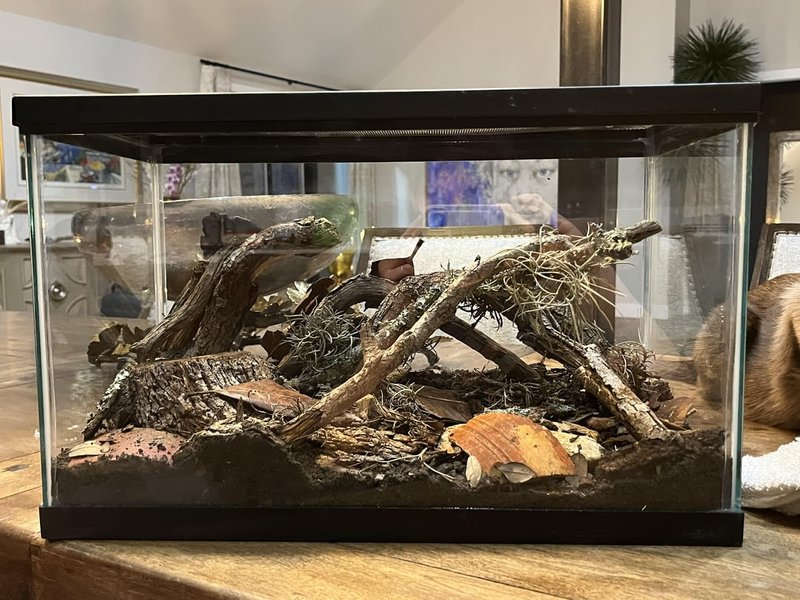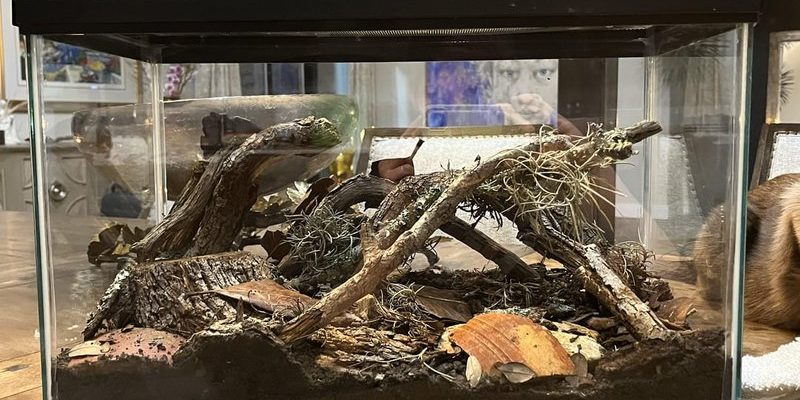
So, what exactly does that perfect enclosure look like? As a newbie, you might feel a bit overwhelmed by all the options and advice out there. Don’t worry! I’ll break it down in a way that’s easy to understand. With the right setup, your striped bark scorpion can feel safe and comfortable, allowing its unique personality to shine through. Let’s dive into the nitty-gritty of what makes a great enclosure, so your scorpion can live its best life.
Choosing the Right Tank Size
When it comes to enclosures, size matters. For a striped bark scorpion, a tank that’s at least 10 to 20 gallons is a good starting point. You might be wondering why it needs this space. Well, these scorpions are naturally found in forested areas, where they roam around looking for food and shelter. Giving them enough room to explore makes them healthier and happier.
A larger tank also helps maintain stable temperature and humidity levels. If your tank is too small, it can create temperature fluctuations, which can stress your scorpion. Plus, having adequate space lets you create various hideouts and climbing opportunities. Think of it like providing a spacious living room where your scorpion can stretch its legs—or, in its case, its pincers.
Substrate Selection: The Base of Their Home
Next up is the substrate. This is the material you’ll use to line the bottom of the tank. For striped bark scorpions, it’s best to opt for a substrate that’s both absorbent and easy to dig. Here are some great options:
- Coir Fiber: This coconut-based material is fantastic for humidity retention.
- Sand: A mixture of sand and soil creates a natural feel, allowing for burrowing.
- Potting Soil: Look for organic, chemical-free types. It’s easy to shape and holds moisture well.
You’ll want to aim for a substrate depth of about 2 to 3 inches. This depth allows your scorpion to dig or burrow, mimicking its natural environment. Plus, it helps maintain humidity and moisture levels in the enclosure. Honestly, you’d be surprised by how much happiness a little dirt can bring to your little critter!
Temperature and Humidity Control
Getting the right temperature and humidity is crucial for your striped bark scorpion’s health. Typically, they thrive in temperatures ranging from 75°F to 85°F during the day, dropping to just a tad cooler at night. To achieve this, you can use a simple heat mat or an under-tank heater. Place this on one side of the enclosure to create a warm side for basking.
Humidity needs to be around 30% to 50%. You can monitor this with a hygrometer, which will let you know if you need to adjust things. If humidity is low, lightly mist the substrate a couple of times a week. Remember, you want a humid environment without making it soggy. Think of it like balancing a good cup of coffee—not too strong, not too weak.
Creating Hides and Climbing Opportunities
In the wild, striped bark scorpions love to hide among rocks, logs, or foliage. To replicate this in your enclosure, add plenty of hiding spots. You can use things like:
- Cork Bark: These pieces are great for climbing and provide excellent hiding spots.
- Rock Caves: Create a natural feel with small caves where your scorpion can retreat.
- Plants: Live or artificial plants can give your scorpion places to hide and add aesthetic appeal.
Having multiple levels of hides and climbing structures allows for natural behavior. Picture your scorpion as a tiny adventurer exploring its surroundings. By creating this enriched environment, you’re not just housing your pet—you’re giving it a place to thrive.
Feeding Your Striped Bark Scorpion
An often-overlooked aspect of enclosure setup is how you’ll feed your scorpion. In the wild, these creatures hunt down insects, so a similar diet is necessary at home. You can offer them a variety of live foods:
- Cockroaches: They’re nutritious and easy to manage.
- Crickets: These are a staple in many scorpion diets.
- Mealworms: These are also a good choice and add variety.
It’s best to feed your scorpion every 5 to 7 days, depending on its age and size. Remember, not all food needs to be in the tank at once. If you notice uneaten food, it’s a good idea to remove it to keep the enclosure clean. Think of it like tidying up after a dinner party—you want to keep things fresh and inviting!
Cleaning and Maintenance
Like any home, your striped bark scorpion’s enclosure will need some cleaning. Regular maintenance will keep your pet healthy and the environment pleasant. Here are some tips:
- Spot Clean: Remove uneaten food and waste daily to avoid odors and bacteria.
- Deep Clean: About once a month, do a thorough clean. This involves removing the substrate, rinsing decorations, and replacing it with fresh substrate.
- Check Temperature and Humidity: Regularly monitor these levels to ensure they stay within the ideal range.
Setting a routine helps you stay on top of things, making it feel more manageable. It’s all about creating a welcoming home for your scorpion, and that means keeping it clean!
Final Thoughts on Setting Up Your Scorpion’s Enclosure
Setting up an enclosure for a striped bark scorpion might seem like a lot at first, but with just a bit of planning, you can create a comfortable habitat. Remember to consider size, substrate, temperature, humidity, and hiding spots to make your pet feel at home.
With the right setup, you’ll not only provide a safe space for your scorpion but also enjoy watching it thrive. Taking care of these fascinating creatures can be a rewarding experience, as they reveal their unique charm and behaviors over time. So, as you embark on this journey, know that you’re giving your striped bark scorpion the best chance to live a happy and healthy life in your care.

